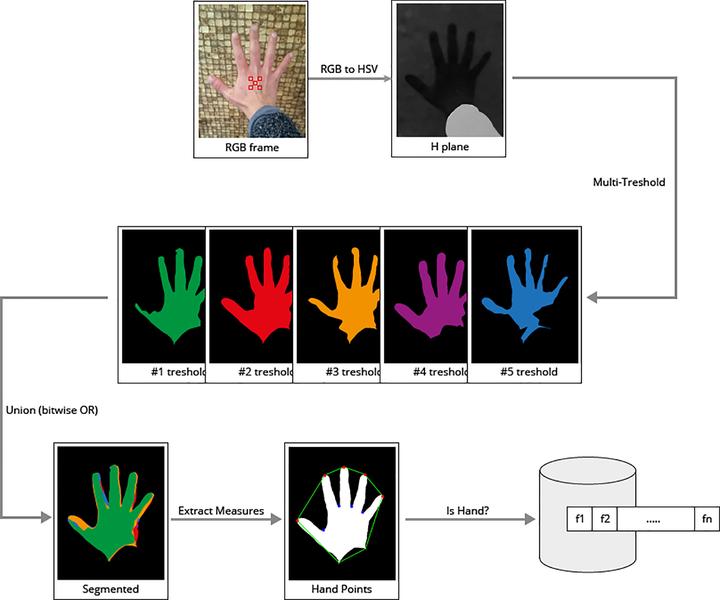
Abstract
The analysis of the shape and geometry of the human hand has long represented an attractive field of research to address the needs of digital image forensics. Over recent years, it has also turned out to be effective in biometrics, where several innovative research lines are pursued. Given the widespread diffusion of mobile and portable devices, the possibility of checking the owner identity and controlling the access to the device by the hand image looks particularly attractive and less intrusive than other biometric traits. This encourages new research to tacklethe present limitations. The proposed work implements the complete architecture of a mobile hand recognition system, which uses the camera of the mobile device for the acquisition of the hand in visible light spectrum. The segmentation of the hand starts from the detection of the convexities and concavities defined by the fingers, and allows extracting 57 different features from the hand shape. The main contributions of the paper develop along two directions. First, dimensionality reduction methods are investigated, in order to identify subsets of features including only the most discriminating and robust ones. Second, different matching strategies are compared. The proposed method is tested over a dataset of hands from 100 subjects. The best obtained Equal Error Rate is 0.52%. Results demonstrate that discarding features that are more prone to distortions allows lighter processing, but also produces better performance than using the full set of features. This confirms the feasibility of such an approach on mobile devices, and further suggests to adopt it even in more traditional settings.